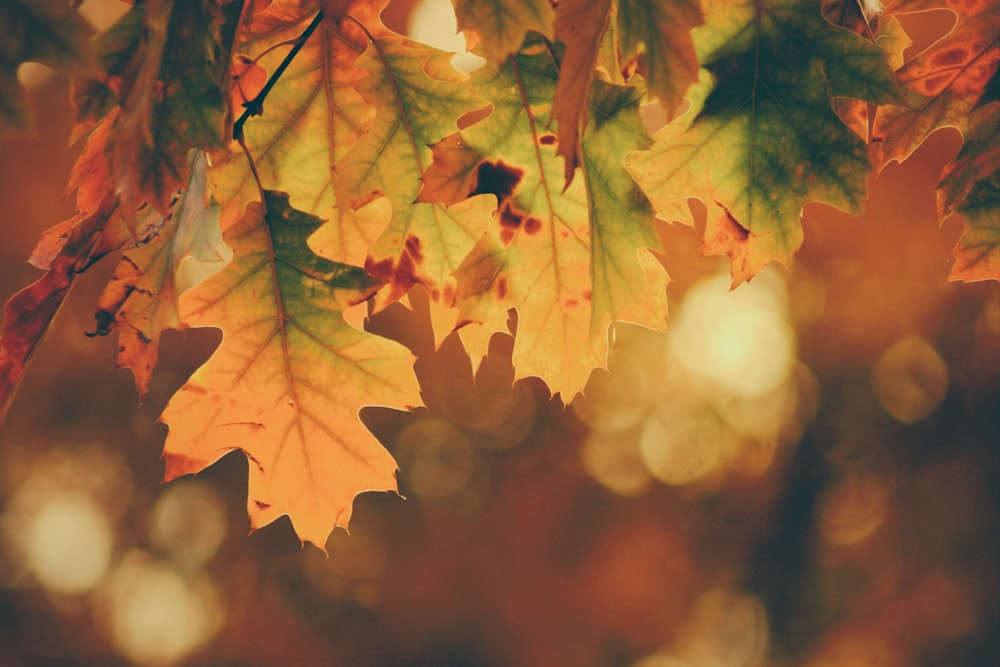Here in Missoula, Montana, fall is in the air. We’ve had another record-setting summer of heat and thus far a mild entry to the new season, but the leaves are changing and a chill is definitely in the morning air.
For many mindfulness and other wellness practitioners, the changing of seasons provides a welcome time to pause and reflect. How has our year been going thus far? What do we hope for in the months to come? What can we do now to ensure a good season?
Decorations really can help
Dr. Elaina DellaCava, a psychiatrist at New York’s Weill Cornell Medicine and New York-Presbyterian Hospital, has said that it’s important to find pleasure in changing seasons and holidays throughout the year. Simply putting up decorations can bring our full body and mind into the process.
According to a 2020 study, we can stimulate more joy and positive feelings this time of the year through embracing the color orange. It makes sense that this color would have positive effects on us, as we see it singled out in many of our celebrations and color themes this time of year. Yellow, too, is associated with joy and amusement, making it a welcome addition.
Bringing these colors into your life will bring you into alignment with the season and with everyone around you. They too love these colors and other aspects of fall, even if they don’t know it yet. There is a reason that “pumpkin spice” everything has become a thing this time of year. And there’s a reason (see below) why many of us rebel against it.
Embrace ritual
As a religion scholar, I can recognize this as a secular ritual. Many of us in the modern world don’t like, or don’t trust, ritual. When we think of rituals, we tend to think of Catholic priests chanting as Christ becomes the bread that parishioners eat, or Buddhists doing prostrations over and over as they face a Buddha statue, or perhaps something from one of the Indiana Jones movies.
But rituals can be anything we do repeatedly and intentionally with the purpose of changing something in our mental world. And psychologists have recognized that rituals in our daily lives are very important. They allow us to physically and emotionally tune in to our days in ways that we predetermine.
If I develop the ritual that says that my first cup of coffee is for relaxing and my second one starts my work, I’m more likely to fall into a pro-work mindset with that second cup of coffee each and every time. If I practice a short meditation each night as part of my sleep routine, then my body and mind will come to recognize this and actually transition to sleep better and better over time as I maintain this ritual.
It’s no wonder that people in ancient times believed that rituals had actual, physical effects in the world. Done correctly, they have massive effects on our bodies and psyches. It only stands to reason that we might also be able to affect the weather and other natural forces.
Avoid the commerce trap
As I mentioned above, many of us rebel against the ubiquity of “pumpkin spice” flavored goods this time of year. That is usually because we dislike the commercialization of something we or people around us love.
As with any opportunity for celebration, there is the potential to fall into the commerce trap with fall decorating and celebrating. In the commerce trap, our experience is no longer about enjoyment, but instead it becomes about bending to the fads created by big companies and keeping up with the Joneses.
Too many holidays are already captured by commerce. Christmas is likely the biggest one, with millions spent convincing us of what the latest “must have” toys and gadgets are. With fall, it’s just as possible to fall into a commerce trap, struggling to find the perfect pumpkins or having the most creative Halloween decorations.
Focus on people who bring joy
Dr. Christie Kederian, a psychiatrist who specializes in the psychology of relationships, notes that “What happens seasonally is our emotions mirror what’s happening in nature, in the world,” adding, “Fall is about letting go and shedding, so that you can bud and build new things.”
Spring and summer are often times of emergence from our psychological caves, exploring new activities and meeting more people. As fall settles in, our minds and bodies tend to pull back, slowing down for the cold season ahead. This can be stressful, as some people will pull back more and earlier, while others are happy to extend out the gregarious time as long as possible.
If you find yourself pulling back more, it’s fair to think about who you want to spend your limited time and energy with in the months ahead. Be honest with those you won’t have as much time for. This can be difficult, but if you don’t, you’ll find yourself burnt out eventually. Those who care about you will do their best to understand. And those who don’t will simply fade away.
Either way, you are working through your own changing energy levels and emotions and taking charge of your time. This in itself is a positive habit to develop and maintain. And if you find yourself on the other side of “social pruning,” you can take the opportunity to empathize and show your care for your friends and acquaintances, a wonderful practice as you prepare for winter and the new year.
 Justin Whitaker, Ph.D., holds a doctorate in Buddhist ethics from the University of London. He has given lectures, and taught Buddhist studies and Philosophy at Oxford University, the University of Hong Kong, the University of Montana, and at Antioch University’s intensive study-abroad program in India. A certified meditation teacher, he is a regular contributor to Patheos.com, and Senior Correspondent for Buddhistdoor Global. Justin is the official blog writer for Sunflower Counseling MT in Missoula, Butte, Kalispell, Billings, and surrounding areas. He lives in Missoula with his family.
Justin Whitaker, Ph.D., holds a doctorate in Buddhist ethics from the University of London. He has given lectures, and taught Buddhist studies and Philosophy at Oxford University, the University of Hong Kong, the University of Montana, and at Antioch University’s intensive study-abroad program in India. A certified meditation teacher, he is a regular contributor to Patheos.com, and Senior Correspondent for Buddhistdoor Global. Justin is the official blog writer for Sunflower Counseling MT in Missoula, Butte, Kalispell, Billings, and surrounding areas. He lives in Missoula with his family.



